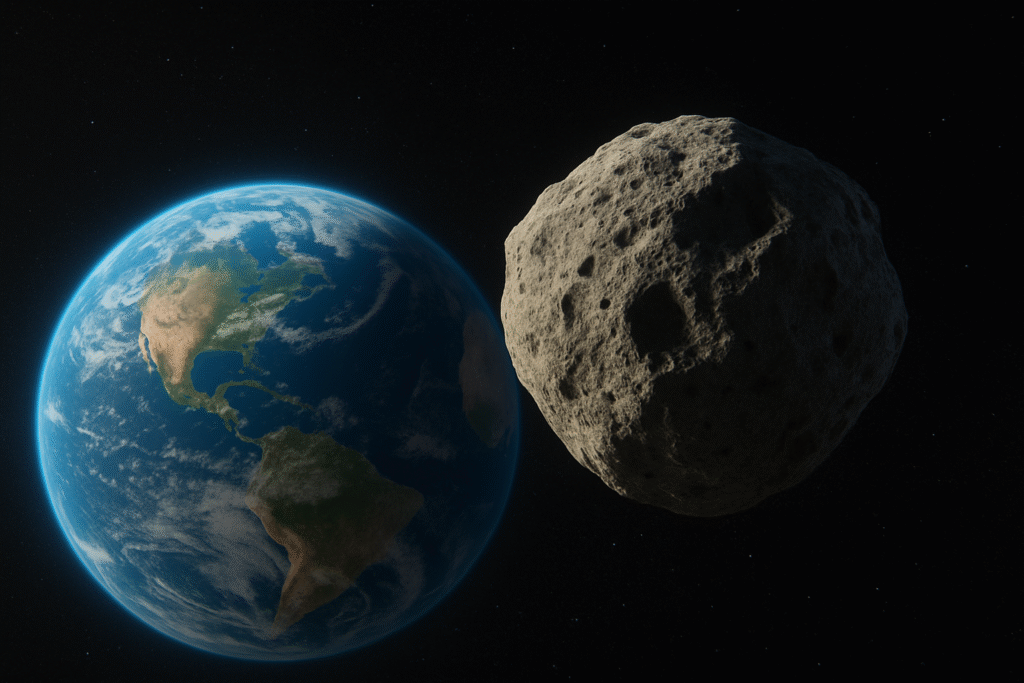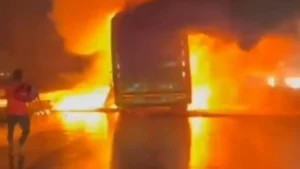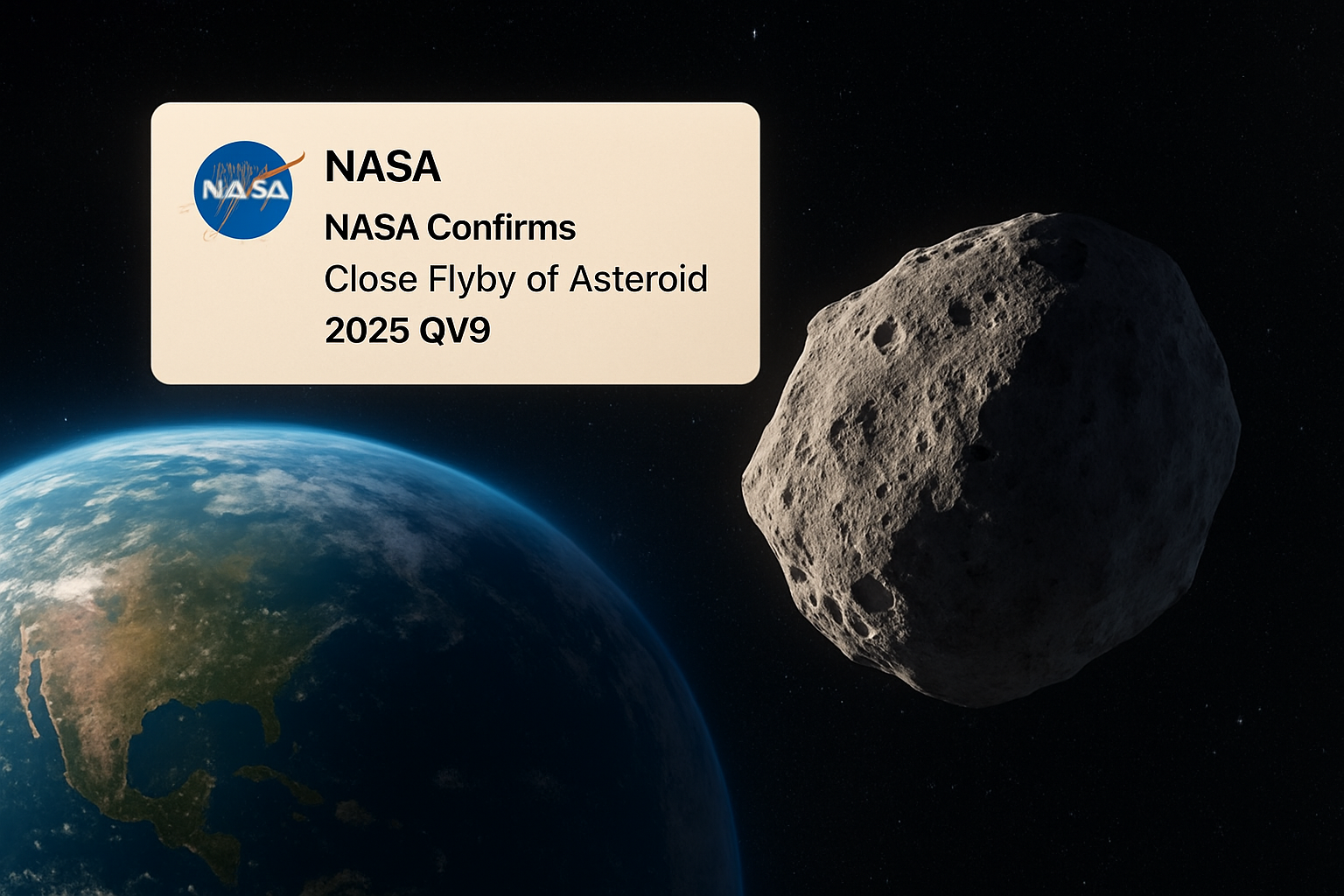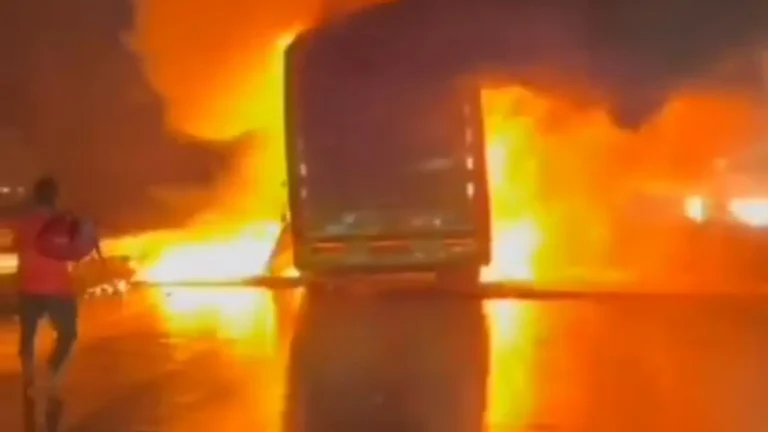Washington D.C., September 10, 2025: NASA has confirmed that asteroid 2025 QV9, a space rock measuring nearly 100 feet in diameter, will make a close approach to Earth today, traveling at an astonishing 10,000 miles per hour. The good news is that the asteroid will pass at a safe distance, but the event has sparked widespread public interest, debate, and even humor across social media platforms.
A Safe, Yet Significant Flyby
According to NASA’s Jet Propulsion Laboratory (JPL), asteroid 2025 QV9 belongs to the category of Near-Earth Objects (NEOs) space rocks and comets whose orbits bring them close to our planet. While today’s flyby is harmless, scientists stress that monitoring such objects is a crucial part of planetary defense efforts.
For perspective, the asteroid will pass several times farther than the distance between Earth and the Moon. While that sounds far, in astronomical terms, it is considered a “close shave.” The flyby allows NASA to refine its tracking data and gather valuable scientific insights into the asteroid’s composition, rotation, and trajectory.
Why NASA Tracks These Objects
NEOs like 2025 QV9 are more than a curiosity; they are a cosmic reminder of Earth’s vulnerability. A rock of this size, if it were ever on a collision course, could cause serious regional devastation, flattening an area the size of a city. History offers grim reminders such as the Tunguska event in 1908, when a smaller object exploded over Siberia, flattening thousands of square kilometers of forest.
To prepare for such possibilities, NASA and international space agencies have invested heavily in planetary defense. The successful DART mission in 2022, which intentionally altered the trajectory of the asteroid Dimorphous, proved that deflection technology is possible. Today’s flyby of QV9 offers another chance to test radar imaging and refine detection systems.
Public Reactions: From Jokes to Genuine Worry

While scientists are calmly analyzing data, the public is buzzing with mixed emotions. On social media platforms like X (formerly Twitter), hashtags such as #Asteroid2025 and #NASAAlert trended throughout the morning. Some users joked about “the end of the world,” while others expressed genuine concern about whether Earth is truly prepared to face a larger threat in the future.
Memes featuring cinematic references from movies like Armageddon and Don’t Look Up went viral, showing just how deeply asteroid scares resonate in popular culture. Yet beneath the jokes lies a real anxiety—what would humanity do if an object larger than QV9 were heading straight for us?
The Bigger Picture: Humanity’s Fragile Place in Space
Asteroid flybys like today’s are not rare dozens of small objects pass close to Earth every year. Most are too small to cause damage, and many burn up in the atmosphere before reaching the ground. However, the larger the asteroid, the higher the stakes.
NASA currently tracks over 30,000 near-Earth asteroids, with new discoveries being made almost daily thanks to improved telescopes and detection software. The agency estimates that it has identified about 95% of the really large, civilization-threatening objects. But the smaller ones like 2025 QV9—are much harder to spot, and even a 100-foot-wide rock could cause catastrophic damage if it struck a populated area.
This is why today’s flyby is viewed as a “wake-up call” rather than a warning. It underscores the importance of funding space science and maintaining global collaboration in planetary defense.
What Comes Next
NASA has announced that it will release detailed radar images and trajectory models of 2025 QV9 in the coming days. These images will help scientists study its shape, spin rate, and surface composition, providing clues about how such asteroids form and move through space.
Meanwhile, space agencies across Europe and Asia are also monitoring the flyby, contributing to a growing international effort to prepare for potential threats. The European Space Agency (ESA) is already working on its Hera mission, which will further study asteroid deflection techniques.
A Lesson in Preparedness
While there is no danger from QV9, today’s news has reignited conversations about whether humanity is truly prepared for the “big one.” Unlike hurricanes or earthquakes, an asteroid impact is one natural disaster that could, in theory, be prevented with enough warning and the right technology. The challenge lies in maintaining long-term vigilance and investment.
Scientists argue that even though the odds of a catastrophic asteroid impact in our lifetime are low, the consequences would be so devastating that preparation is not optional. As NASA officials often put it: “The dinosaurs didn’t have a space program. We do.”










One thought on “NASA Confirms Close Flyby of Asteroid 2025 QV9: No Threat, But a Powerful Warning From the Cosmos”